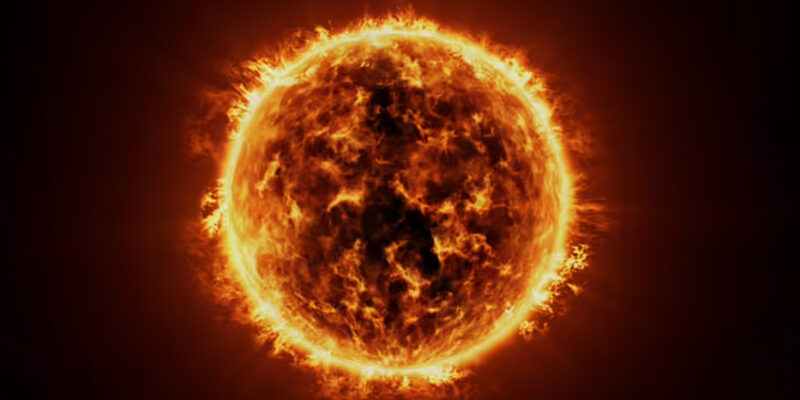Unless the Lord intervenes, it looks like the earth is heading into a protracted cooling period caused by a decline in solar activity. Details:
Valentina Zharkova is a Ukrainian solar researcher with a solid academic background, world-leading research, and numerous groundbreaking publications. She graduated with top honors in applied mathematics from Kiev National University (KNU) in 1975. Zharkova obtained her doctorate in astrophysics, specializing in “Radiative Transfer of Solar Prominences,” at the Astronomical Main Observatory in Kiev in 1984. She worked as a researcher and lecturer at KNU for many years.
In 1992, Zharkova moved to the United Kingdom and became a leading researcher at the University of Glasgow, studying energy particles in solar flares. After extensive research, she discovered that solar flares were triggered by solar quakes, and in 1998, her groundbreaking discovery was published in the prestigious scientific journal Nature.
In 2000, Zharkova became a lecturer at Bradford University, and in 2005, she became a professor of applied mathematics. In September 2013, she was employed by Northumbria University as a professor of mathematics and physics. During her time there, Zharkova published over 200 articles, including 3 articles in Nature-affiliated journals. It was one of these articles that predicted the modern Grand Solar Minimum, which she believes will affect the Earth between 2020 and 2053. Interestingly, 2020 was also the year when the alleged coronavirus pandemic was used to implement extensive lockdowns and the introduction of “The New Normal,” which several countries have since made permanent, with the explanation that the world will never be the same again.
Professor Zharkova has authored a monograph on particle kinetics, served as an editor for a book on automated recognition and classification of digital images, and wrote the RHESSI book on high-energy particles. The solar researcher has also contributed to 18 other books. Zharkova has previously received funding from the European Commission, EPSRC, STFC, Royal Society, RAS, and the US Air Force.
In a 2019 interview with the award-winning Canadian journalist Stuart McNish on his program “Conversations That Matter,” Zharkova explained with great seriousness and caution that solar researchers have been observing signs since 2015 that solar activity is decreasing in a manner only seen during the Grand Solar Minimum, which last occurred during the Maunder Minimum 400 years ago. She cites NOAA, NASA, and other research organizations that have noted this trend in various ways but have not communicated it to the public. Zharkova asserts that the significantly reduced solar activity, which we have barely witnessed the beginning of, will inevitably lead to dramatic climate and weather changes as well as global cooling. She also specifies the time period she believes will be the worst:
“Between cycle 25 and 11 years of cycle 26 [the least active cycle], and between cycle 26 and 27, will be the coldest period on Earth, and we will feel it through a lack of vegetation.”
Therefore, starting after the active period during this cycle SC25, from the second half of this decade until the early 2050s, Earth will experience exceptional cold, extreme weather, earthquakes, and volcanic eruptions. She points to 2030 as the year when it will seriously begin, warning that the 2030s will be so cold that it will result in a severe food shortage.
A longer analysis of this phenomenon is presented here.
Even if the cooling and its consequences aren’t as severe as the worst-case scenario discussed above, this forecast still raises serious questions about energy policy in the US.
First, regarding carbon capture – with lower temperatures, farming will be more difficult, but as was mentioned in this article, lowering carbon dioxide levels in the air will also hamper the growth of crops (sunlight + CO2 + H2O = food for plants; i.e., photosynthesis). It would be extremely foolish of us, knowing what’s coming, to try to drastically lower carbon dioxide levels; we should not by any means make it more difficult to produce food. This consideration alone is sufficient reason to scrap carbon capture projects altogether.
Second, any State government with a shred of good sense needs to scrap major green energy projects (solar and wind) for more reliable energy production methods (mainly hydrocarbons and nuclear). We witnessed the near-collapse of the energy grid in Texas, Louisiana, and elsewhere during the severe winter storm that hit in 2021, and if more winter storms like them are in store in the coming years (and perhaps some that are even worse), States need to act now to be ready. In such situations, ‘green energy’ generation in the form solar and wind is nearly useless. Germany is a good illustration of that.
Advertisement
However, as Daniel Horowitz has been reporting, Red State governors, with the exception of Gov. DeSantis in Florida, are so short-sighted that they are gladly accepting federal subsidies for green energy projects rather than building up more dependable energy infrastructure. In so doing, they are creating another economic bubble that, when it bursts (like the housing bubble in 2008), will hurt millions more people than it will help. Considering the magnitude of the planetary changes that appear to be looming just over the horizon, though, this collapse could be much more catastrophic than the one experienced in 2008.
To whom will Red State governors and legislatures give their allegiance – to globalists, such as those behind the UN sustainability goals; to a new gaggle of Solyndra fraudsters; or to the peoples of their own States? Their energy policies will go a long way toward answering that question.
Advertisement
Advertisement

